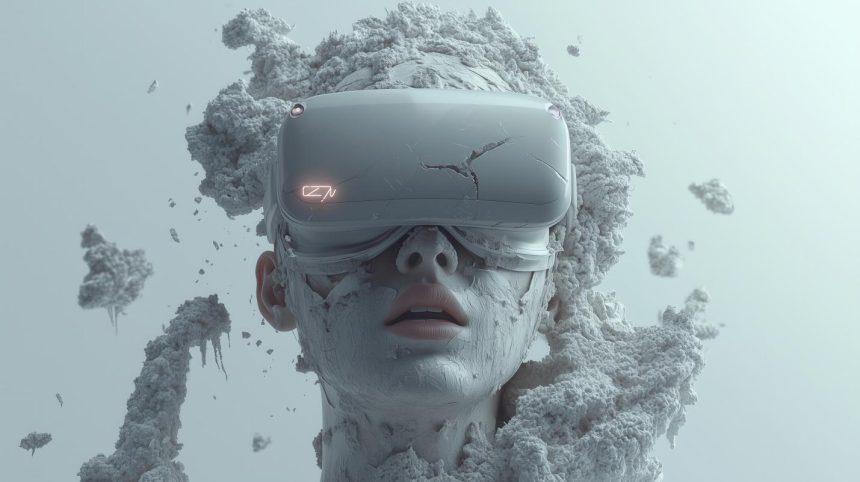Hybrid Collapse transforms technology into a creative language—merging AI generation, data aesthetics, and computational design into a unified artistic system. Built within the logic of modern infrastructures, it turns code, algorithms, and digital processes into expressive tools, supported by a growing glossary that decodes the philosophical and technological ideas shaping this post-digital art form.
The Fusion of Innovation and Expression
In the contemporary era, technology no longer stands apart from culture — it is the very medium through which culture unfolds. Hybrid Collapse exemplifies this transformation: a project that merges artificial intelligence, computational design, and digital infrastructure into a unified aesthetic system. It’s a case study in how modern creativity evolves directly within technological ecosystems, not simply using them as tools but treating them as collaborators.
Every track, visual, and concept in Hybrid Collapse emerges from the same technological logic that drives AI development and data-driven systems. The result is art that feels alive, algorithmic, and deeply reflective of the digital condition.
AI as Co-Creator
Artificial intelligence forms the creative backbone of Hybrid Collapse. Neural networks generate surreal visuals — from shifting posthuman silhouettes to abstract digital environments — while algorithmic tools contribute to sound synthesis, rhythm formation, and textural layering.
This collaboration between human intention and machine computation creates an emergent aesthetic. Artists set parameters; algorithms produce variations; the final composition becomes a dialogue between code and consciousness.
Such hybrid authorship mirrors the broader evolution of technology itself: AI is no longer confined to automation — it now participates in meaning-making.
Data as Artistic Material
Beneath the visuals and sound lies the raw substrate of the modern world — data. Hybrid Collapse transforms data into form:
- Glitches represent system instability.
- Repetition mirrors algorithmic loops.
- Digital distortion becomes metaphor for fragmented perception.
In doing so, the project illustrates a new mode of artistic thinking: data aesthetics, where the architecture of code and the behavior of networks influence artistic structure as much as melody or color once did.
Computational Infrastructure as Creative Space
The production of Hybrid Collapse relies on high-performance computing, cloud rendering, and distributed collaboration. Its workflow resembles that of a tech lab: automated pipelines, scalable rendering farms, and iterative releases.
Each piece functions like a software deployment — tested, refined, versioned, and launched across platforms from YouTube to Instagram. This computational backbone doesn’t just support the project — it defines its rhythm, speed, and aesthetic language.
Through this lens, Hybrid Collapse reveals how technological evolution has become inseparable from artistic evolution.
The Glossary: Decoding the Digital Mind
To accompany its audiovisual universe, Hybrid Collapse maintains a glossary — a conceptual map explaining the philosophical and technological ideas behind its work. Terms like algorithmic identity, digital eugenics, and posthuman beauty turn abstract theory into accessible language.
For audiences navigating the intersection of art and technology, the glossary acts as a decoder, showing how each creative decision connects to larger questions about data, control, and consciousness. It’s a reminder that the digital revolution is not only technical but semantic — reshaping the words we use to describe reality.
Technology as Aesthetic Condition
Hybrid Collapse is not simply inspired by technology — it embodies it. The rhythms of AI generation, the feedback loops of algorithms, the scale of data — all become part of its artistic DNA.
This marks a shift from technology as background infrastructure to technology as aesthetic condition: the environment in which meaning, identity, and beauty are produced.
By embracing this condition fully, Hybrid Collapse demonstrates what the future of creative work looks like — art born from computation, shaped by data, and guided by intelligence both human and artificial.
Conclusion
Hybrid Collapse stands as a blueprint for the next stage of cultural evolution, where music, visuals, and philosophy grow from the same technological roots. It invites us to rethink creativity not as opposition to machines, but as a collaboration with them — one that reveals the poetic potential hidden inside algorithms and data flows.
And through its growing glossary, it ensures that audiences not only experience this digital aesthetic but also understand the language that builds it.
Lynn Martelli is an editor at Readability. She received her MFA in Creative Writing from Antioch University and has worked as an editor for over 10 years. Lynn has edited a wide variety of books, including fiction, non-fiction, memoirs, and more. In her free time, Lynn enjoys reading, writing, and spending time with her family and friends.















